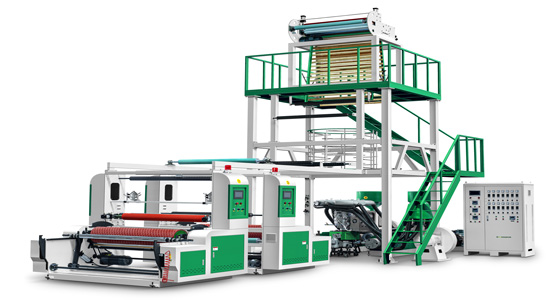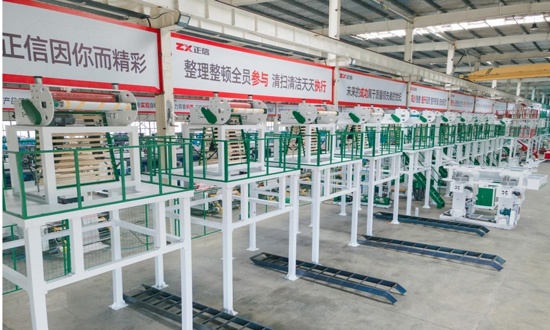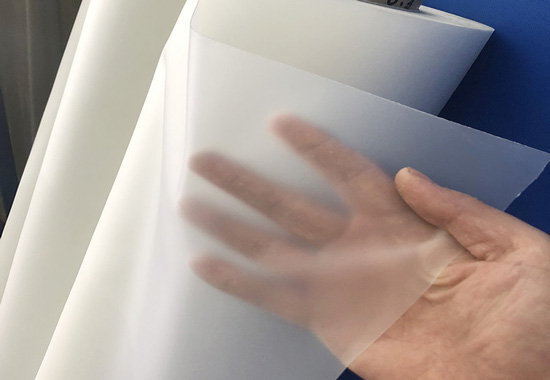Blown Film Machine is the equipment used to produce plastic films. Common types include ABA Blown Film Machine, Monolayer Blown Film Machine and Biodegradable blown film machine. Problems that may be encountered during the film blowing process include uneven film thickness, air leakage, temperature control failure, etc.

Films wrinkle and fold when switching between recycled and new materials.
Non-uniform thickness of the film in the transverse direction, even minor differences can accumulate and lead to noticeable wrinkles.
Insufficient or uneven cooling.
Excessive angle in the Chevron board.
Uneven installation of the machine head (die).
Reduce melt temperature to effectively decrease melt flow.
Reduce cooling airflow or address uneven cooling.
Reduce the angle of the Chevron board to prevent rapid flattening of the film.
Adjust the extrusion die to ensure uniform material flow.
Ensure consistent tension in the winding rollers.
Uneven transverse thickness of the film due to uneven material output from the die.
Improper adjustment of the lip gap in the die, requiring local or complete readjustment.
Presence of foreign objects in the mold cavity causing material flow disruptions; regular cleaning is recommended.
Excessive temperature or significant pressure fluctuations affecting extrusion stability.
Adjust the lip gap in the die locally or entirely.
Regularly clean the die to remove foreign objects.
Adjust temperature and extrusion speed for improved thickness uniformity.

Frequent occurrences of roll running during winding.
Insufficient tension in the winding rollers leading to loosely wound film.
Unstable winding tension.
Misalignment of the axes of various guide rollers.
Uneven transverse thickness of the film.
Increase winding roller tension.
Stabilize winding tension.
Ensure parallel alignment of guide roller axes.
Address and correct the uneven transverse thickness of the film.

Insufficient transverse shrinkage of the film during the blowing process.
Inadequate transverse orientation during the film extrusion process.
Increase the content of high-pressure components in the formulation, preferably using low melt index high-pressure materials.
Reduce the linear use of high melt index materials; consider using materials with 0.5 or 0.2 melt index.
Adjust frost line height and increase the blow-up ratio if possible.

Film edges flutter during production.
Uneven pressure on the film as it passes through the Chevron board.
Unstable airflow, including ring airflow and internal workshop airflow.
Improperly aligned die head.
Large fluctuations in winding tension.
Uneven or misaligned nip rollers.
Ensure even pressure on the film passing through the Chevron board.
Stabilize airflow, both ring and internal workshop airflow.
Verify and correct the alignment of the die head.
Minimize fluctuations in winding tension.
Ensure nip rollers are level and have even gaps.

Excessive necking during film extrusion.
Insufficient melt strength.
Use high melt strength extrusion materials to avoid common high-pressure materials.
If using a combination of linear and high-pressure materials, increase the proportion of high-pressure materials.
Adjust melt temperature as needed.

Use metallocene or octene-based materials for the heat-sealing layer.
Increase the thickness of the heat-sealing layer.
Add medium-density or low-pressure materials in the middle layer of the film.
Excessive crystal points in the film.
Crystal points can result from various factors, such as foreign contaminants, cross-linking/oxidation, and poor plasticization.
Note: Detailed analysis and solutions for crystal points will be covered in a forthcoming dedicated article. Stay tuned for updates.




